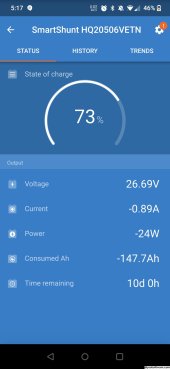I have an issue with a 5kva AIO inverter waking up when the morning sky gets bright. It flicks between trying to run on hopelessly low PV energy and draining the battery bank.
Then in the evening as the sun goes down the same problem happens.
So I wrote a program that senses the PV voltage using a PIC microcontroller.
It controls the PV panels via a 2.5KW DC solid state relay on the positive PV line (I use an east-west array and the inverter is deliberately oversized)
The PV panels are connected when PV OC voltage is > 117 VDC and disconnects when load voltage is < 85 VDC.
A time delay of ten seconds allows for brief low PV voltage excursions. If the inverter cannot pull itself from draining the battery after ten seconds the PV arrays are disconnected for 20 minutes. The inverter goes to standby and switches to bypass mode. In the event of a power failure it will of course have full battery capacity available.
Then in the evening as the sun goes down the same problem happens.
So I wrote a program that senses the PV voltage using a PIC microcontroller.
It controls the PV panels via a 2.5KW DC solid state relay on the positive PV line (I use an east-west array and the inverter is deliberately oversized)
The PV panels are connected when PV OC voltage is > 117 VDC and disconnects when load voltage is < 85 VDC.
A time delay of ten seconds allows for brief low PV voltage excursions. If the inverter cannot pull itself from draining the battery after ten seconds the PV arrays are disconnected for 20 minutes. The inverter goes to standby and switches to bypass mode. In the event of a power failure it will of course have full battery capacity available.



